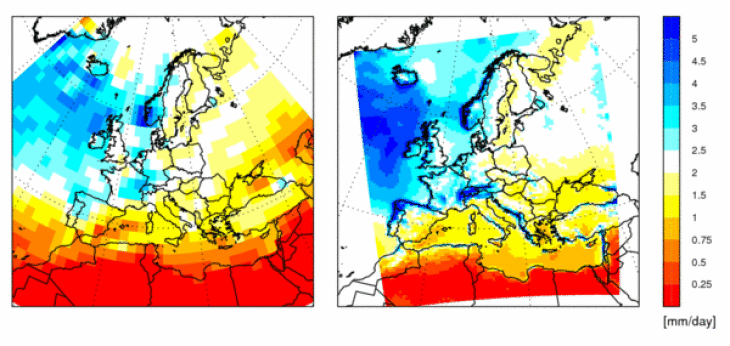Seasonal forecasting
Investigation of the “added value” to seasonal forecasts by dynamical downscaling
Kevin Sieck
Low flow periods in rivers like the Rhine have major impacts on industrial sectors such as transports and energy. Therefore it is of crucial importance to explore the predictability of the water level in rivers for seasonal to decadal (s2d) time scales in addition to short-term day-to-day forecast and climate projections.
The potential of s2d forecasts of river run-off will be explored using the regional climate model REMO with very high horizontal resolutions. It cannot be expected that in simulations with REMO in climate mode every single weather event is calculated realistically in time and space, only the climate will be represented. Using the nesting technique in climate mode has the advantage that mesoscale phenomena, which are not present in the driving fields due to the coarse horizontal resolution and which are for example initiated through a more detailed land surface representation in the regional model, can develop within the simulation domain and without strong constraints from outside (see Figure 1). Especially for precipitation which is essential in run-off forecasts one can expect benefits from the better resolved model and a enhanced skill in spatial patterns and amount compared to the output from the coarse resolved global model.

Precipitation fields from ECHAM5 (~200 km horizontal resolution, left) and REMO (~50 km, right) simulations over Europe.
In a first step, seasons with well predicted seasonal forecasts for Europe from the global models in terms of temperature and large scale flow will be used for downscaling. For these test cases, all members of the global model ensembles will be used to get deterministic and probabilistic analysis comparable to the global models afterwards. This analysis will determine the “added value” by dynamical downscaling for Europe in these test cases.
Further investigations will include comparisons with statistical methods. In addition a downscaling for South America and/or Africa is planned because in this regions the skill of the global models is much better than for Europe.

